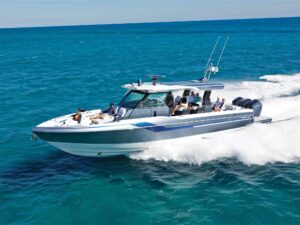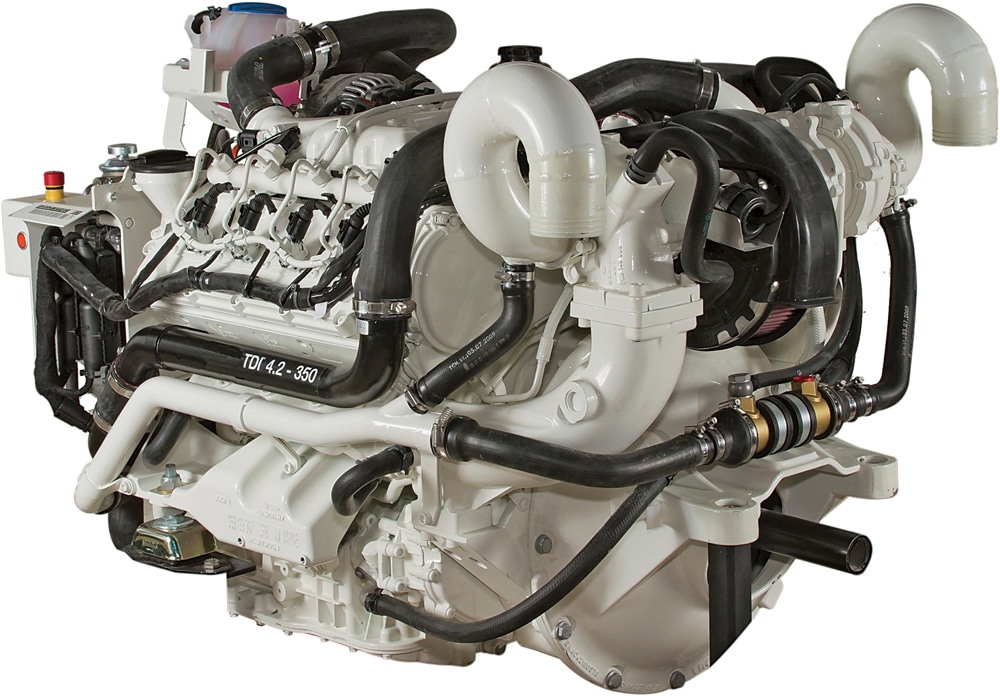
New Boat Engines for 2013
Mercury TDI SmartCraft
Who Wants It? Boaters seeking relief from ethanol worries associated with gasoline engines.
Importance? High efficiency, high performance and high torque in a small footprint.
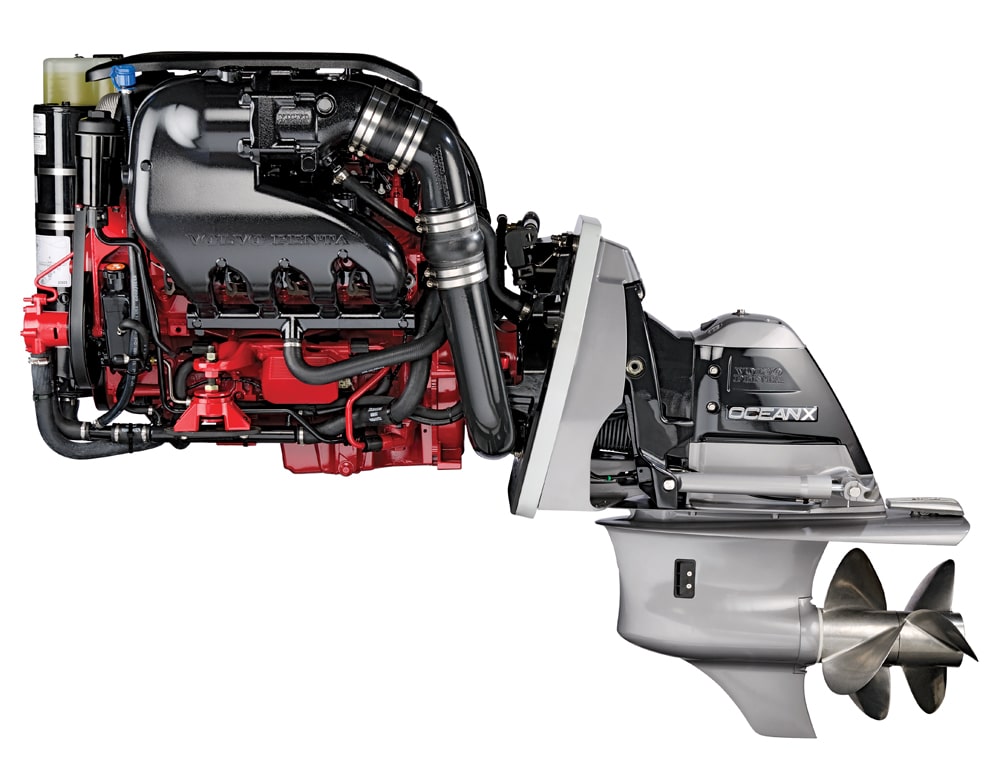
New Boat Engines for 2013
Volvo Penta V8-380
Who Wants It? Boaters seeking a broad torque band, lighter weight and deeper gear ratios.
Importance? The first sterndrive/inboard with variable valve timing.
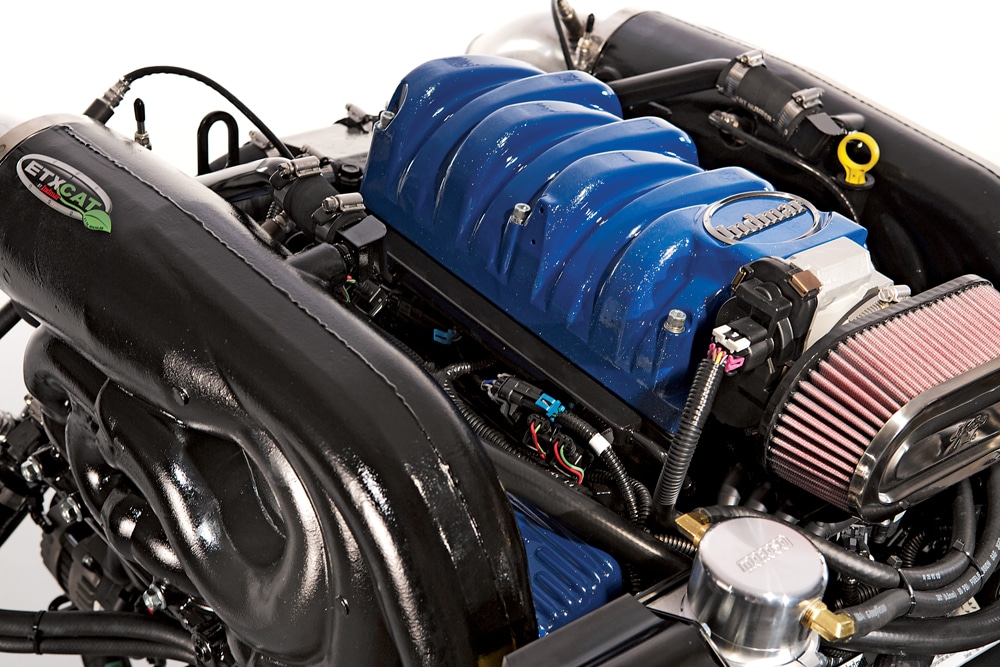
New Boat Engines for 2013
Indmar Assault 345
Who Wants It? Boaters seeking reliability despite repetitive, aggressive boat maneuvers.
Importance? First engine that addresses the lubrication challenges facing serious tow-sports boaters.
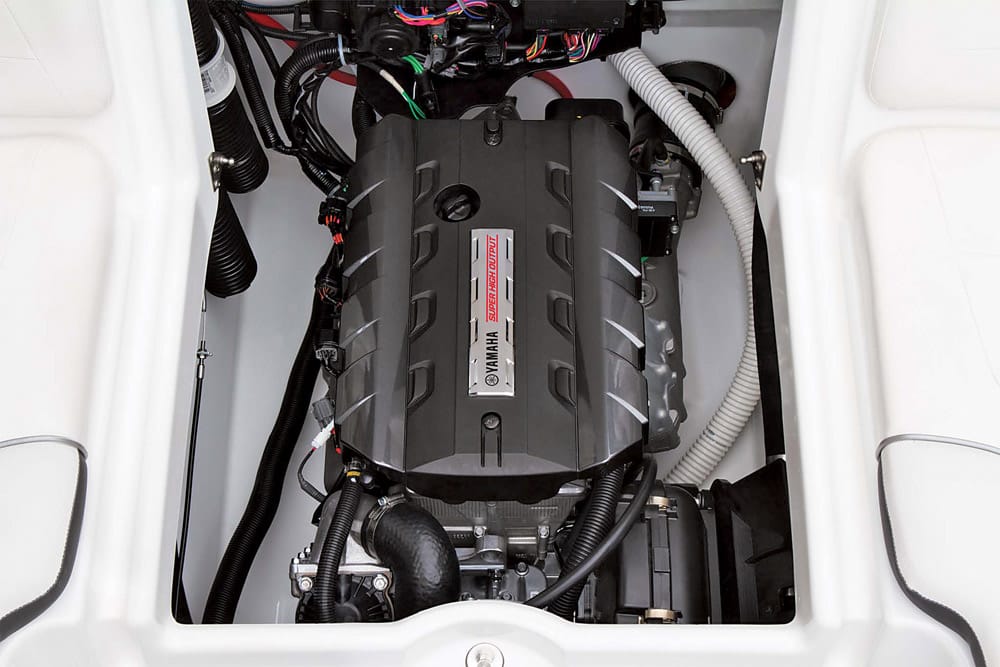
New Boat Engines for 2013
Yamaha SHO
Who Wants It? Boaters seeking less bow rise and exciting high-speed maneuverability.
Importance? Low profile provides more flexibility in arranging a boat’s interior layout.
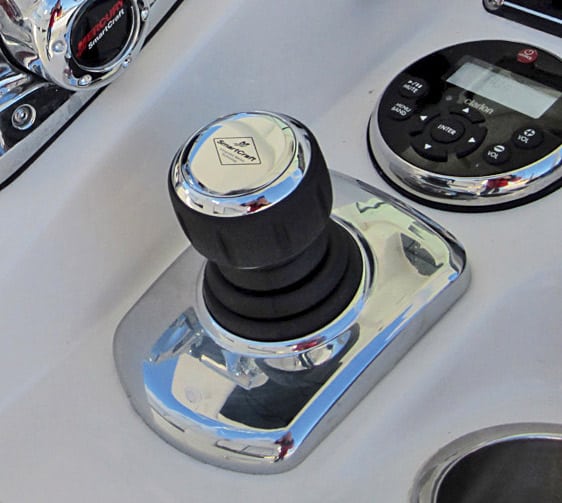
New Boat Engines for 2013
Yamaha Helm Master
Who Wants It? Outboard boaters seeking a key-switch-to-prop joystick and electronic control solution.
Importance? Large outboard-powered boats are a growing trend.
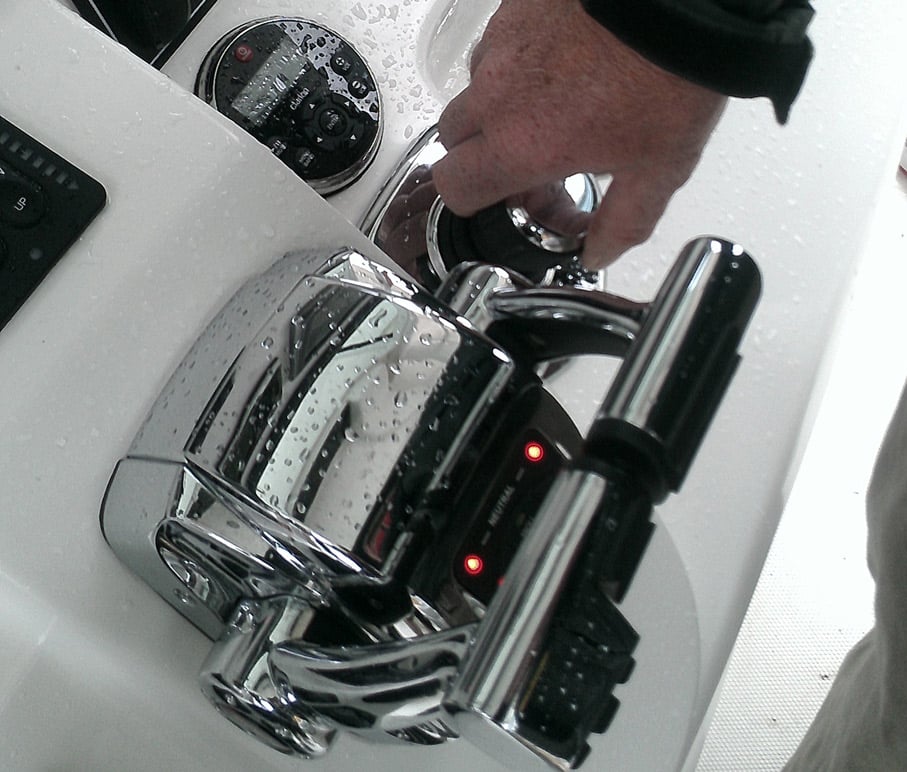
New Boat Engines for 2013
Mercury Joystick Piloting
Who Wants It? Outboard boaters seeking a key-switch-to-prop joystick solution.
Importance? Large outboard-powered boats are a growing trend.
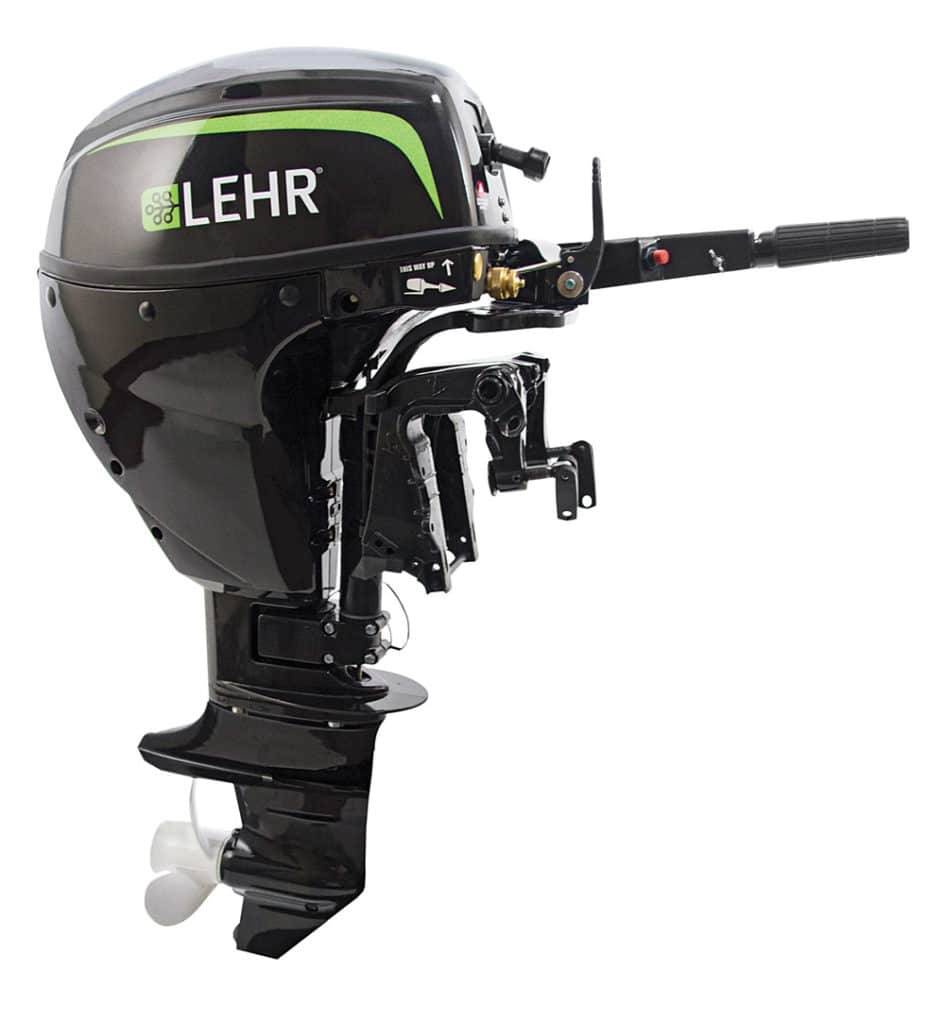
New Boat Engines for 2013
Electric and Propane
Who Wants It? Boaters seeking less noise and/or less odor.
Importance? Leapfrogging power and run-time limits bode well for the future of alternative propulsion.
Lighter, smarter and more-efficient new options in marine power promise to enhance our boating experience. Here’s a roundup of the latest fresh ideas.
Mercury TDI SmartCraft
In 2013, Mercury TDI diesel engines, including the company’s 350 hp TDI 4.2 V-8, will meet Environmental Protection Agency Tier 3 emissions regulations and be equipped with the Mercury SmartCraft suite of features, including DTS digital controls and Axius joystick when mated to MerCruiser sterndrives. Fuel prices might have to reach $10 a gallon before a diesel engine makes economic sense for most American pleasure boaters, but in Europe, where gas is already very expensive, diesel is the norm for sport-boat power. The TDI 4.2 is about 500 pounds lighter than competing engines in this class and can run at a higher speed — 4,200 rpm compared with 3,300 to 3,800 rpm. That means that the TDI 4.2 can be rigged with a smaller-pitch prop, which helps it overcome a torque deficiency and makes the boat slower and thus easier to handle around the dock. Based on Volkswagen engines, the Merc TDI diesels have been a big hit in Europe and other export markets, where quiet operation and fuel efficiency are prized. The addition of all things SmartCraft makes TDI engines a more-complete package. EPA Tier 3 compliance also means these diesels can again be offered for sale in the United States.
Volvo Penta V8-380
Presented as a lightweight, high-tech alternative to “big block” gasoline sterndrive and inboard engines, the new 6.0-liter (364 cubic inch displacement) V8-380 replaces the company’s 8.1-liter offering and is an interesting alternative to the 380 hp MerCruiser 8.2 Mag. Based on a General Motors Powertrain Vortec 6.0L (L96) VVT engine, the V8-380 is the first gas sterndrive or inboard engine offered with variable valve timing (VVT). A common feature on current auto engines, and also on Honda, Suzuki and Yamaha outboards, VVT broadens the power band of the engine by changing the position of the camshaft relative to the crankshaft through a range of 26 degrees. This produces a broader overall torque band — 90 percent of max torque is available from 2,000 to 5,500 rpm — with good bottom-end grunt and deep-breathing top-end power at the engine’s peak speed of 6,000 rpm. Without VVT you’d get one or the other, not both.
VVT and less displacement help the V8-380 achieve 12 percent better fuel economy than the engine it replaces, and it weighs 270 pounds less than a MerCruiser 8.2-liter package, all according to Volvo. The V8-380 is offered only with a closed cooling system, which includes the coolant circulating through aluminum exhaust manifolds and the oil cooler. Closed cooling also helps maintain a more-constant oil and engine temperature, which aids efficiency.
When GM discontinued production of its 8.1-liter engine in late 2009, Volvo stocked up and had enough inventory to offer that engine until May 2012. Mercury Marine took a different path and in 2010 introduced its MerCruiser 8.2L engines, which it assembles itself using a GM block. Mercury places value on the benefits of displacement and “proven, tested, simple, reliable and low rpm engines,” a spokesperson says. “The benefits of the current strategy outweigh the potential benefits of increasing high-tech automotive technology.” In other words, keep it simple.
I expected simple would also be less expensive, but that may not be the case. Boatbuilders ultimately set the retail price of engine options, and after surveying the prices of several builders, it appears the Volvo Penta V8-380 will cost $2,100 to $2,500 less than an equivalent MerCruiser 8.2L Mag, at least for the coming season.
Indmar Assault 345
Tow-sports enthusiasts keep throwing boatbuilders new challenges. First they wanted a ski boat with no wake. Then a wakeboard boat with lots of wake. Now they want to wakesurf, which requires the boat to list way over to one side while powering down the lake. Trouble is, the engine that powers tow boats was originally designed for a pickup truck, not an airplane. Tip it on its side, and the oil sloshes over in the sump, creating problems. So Indmar introduced its Assault 345, a 345 hp, 5.7-liter V-8 with an air-oil separator that prevents oil induction to the positive crankcase ventilation (PCV) system. The Assault 345 also has a generous seven-quart baffled oil pan to deliver adequate lubricant during high-G turns. It makes 370 pound-feet of torque for outstanding pulling power. The Indmar Assault 345 is offered by tow-boat builder Skier’s Choice in its Moomba and Supra brand boats.
Yamaha SHO
The Yamaha SHO power train is new in the company’s SX/AR192 sport boats for 2013, but this jet-drive system has been used in its WaveRunner personal watercraft since the 2008 model year. In a 19-foot sport boat, this supercharged/intercooled, 210 hp, 1.8-liter four-cylinder is lightweight, compact and technically sophisticated when compared with available sterndrive power. The Yamaha engine and pump combined weigh 306 pounds. Consider that a small-block V-8 sterndrive like the new 225 hp Volvo Penta V8-225 weighs more than 1,000 pounds with an outdrive. That’s a big advantage for the Yamaha system in a lightweight sport boat, whether it’s on the water or being towed — it weighs less than 3,000 on its trailer. The compact size and low profile of this power train allow Yamaha to design a transom with a low center step-through, two-level lounge and swim platform that can’t be duplicated with a sterndrive.
Yamaha’s SHO comes equipped with a digital throttle that enables Cruise Assist, a system that allows the skipper to lock in any engine speed at the push of a button. Through a toggle switch on the helm, boat speed can then be adjusted up or down in increments of approximately 200 rpm to dial in the perfect speed for towing a wakeboarder or the kids on a tube. No Wake Mode can be set to a desired engine rpm in five increments from 1,100 to 2,100 rpm, holding a modest speed in no-wake zones with enough thrust to keep the rudderless boat on course. Set at about 1,800 rpm, it delivers good control for most docking situations and stays engaged as the lever is shifted from forward to reverse thrust. With a little practice you can execute low-speed maneuvers by just shifting and steering.
Yamaha Helm Master
A new digital outboard control system that includes a joystick will debut this spring. Offered for twin- or triple-rig F350 V-8 and all 4.2-liter V-6 Saltwater Series outboard models, Helm Master will be available only as an original installation on boat models certified by Yamaha. Helm Master components include a digital helm (steering), an electronic key switch, a new digital remote control, power hydraulic steering pumps, the joystick and a new Command Link Plus 6Y9 5-inch color LCD instrument display. Helm Master syncs and holds engines at any rpm, with a toggle to adjust speed in small increments. The Trim Assist feature senses engine rpm and trims the motors to a preset program determined by the builder, but adjustable by the owner. At wide-open throttle, trim should be optimal for speed. And when the boat is throttled off plane, the motors return to the full-down position. The joystick has two power settings, with “high power” available when wind or current conditions demand extra thrust. The Yamaha system powers and steers all three engines in a triple-rig application, with the center engine most often working to provide reverse thrust as needed. During my demo, I was impressed with its performance on a Contender 35 ST with triple F300 motors — because the power of the center engine seems to make joystick operation more responsive — in gusty wind and strong current. Boatbuilders will determine Helm Master’s retail price, and Yamaha has not released pricing information.
Mercury Joystick Piloting
Joystick control offers outboard owners the same maneuverability that pod-drive and sterndrive boaters have come to enjoy. It’s expensive technology that limits its appeal to the upper end of the market. Owners of outboard-powered fishing rigs are apt to pooh-pooh a joystick: Man up and learn to dock your boat! Of course, these are the same folks who had no use for power steering and digital controls a few years ago. Teleflex Marine debuted its Optimus 360 outboard joystick, a system that works with all cable-controlled outboards in a dual installation, in 2012, and it incorporates a digital helm and controls for $18,000 plus installation. In 2013, Mercury joins the joystick party.
In early 2013 joystick piloting for Verado 250 and Verado 300 outboards debuts. It can’t be retrofitted, so you’ll have to repower or buy a new boat to get it. It’s offered for twin, triple and quad Verado installations. Mercury already has joysticks for its Zeus pod-drives and its Axius system for MerCruiser sterndrives. The Axius steering actuator mates to the Verado steering ram in a single unit located in front of the motor. The Verado motors already have a digital helm, digital throttle and shift, and power steering. The joystick plugs right into that system, so it’s a very tidy installation compared with the Teleflex system. Pricing is not yet available. As with Axius, we expect cost will vary by builder.
Electric and Propane
Propane outboard manufacturer Lehr Inc. will add a 9.9 hp outboard to its marine engine line in 2013, joining its 2.5 hp and 5.0 hp models. This new 9.9 takes Lehr into a larger market segment. The twin-cylinder, 212 cc motor features forward-neutral-reverse (F-N-R) shifting and weighs 87.7 pounds. A Mercury 9.9 FourStroke displaces 208 cc and weighs 83 pounds, just for comparison. The Lehr 9.9 is fueled from a 10- to 20-pound propane bottle placed in the boat. Retail pricing starts at $2,599 for a 15-inch model with manual starting and a tiller. The motor will also be offered with a 20-inch shaft, remote controls and electric start options. Derived mostly from natural gas, propane is currently cheaper than gasoline in some markets when purchased in bulk. Propane is clean-burning and nontoxic, produces no evaporative emissions, and will not damage marine life. It’s also much cleaner and perhaps safer to have on board than gasoline for auxiliary power. Contact golehr.com/index.shtml.
Torqeedo expects the commercial market to provide initial sales for its 80 hp (60 kW) Deep Blue electric outboard motor, but it’s also working with pleasure-boat builders and may rig the motor on a pontoon at the 2013 Miami boat show. This motor will be a big leap for Torqeedo, which offers a line of kicker-size electric propulsion motors up to 4 kW. Marinized lithium batteries power the 400-volt system. Each 14 kW battery measures 3 feet by 2 feet by 1 foot and weighs 330 pounds. Torqeedo says four batteries provide five to seven hours of working power. The motor with controls will cost $17,500, with each battery pack priced at $15,000.
Torqeedo’s position is that you’re buying 10 years of fuel up front. There’s no fuel to store and no service costs, it says. There are environmental advantages and electric motors are virtually silent. Because electric motors make full torque at all speeds, it’s ideal for pushing heavy boats. Deep Blue will be available in February 2013. Contact torqeedo.com.




